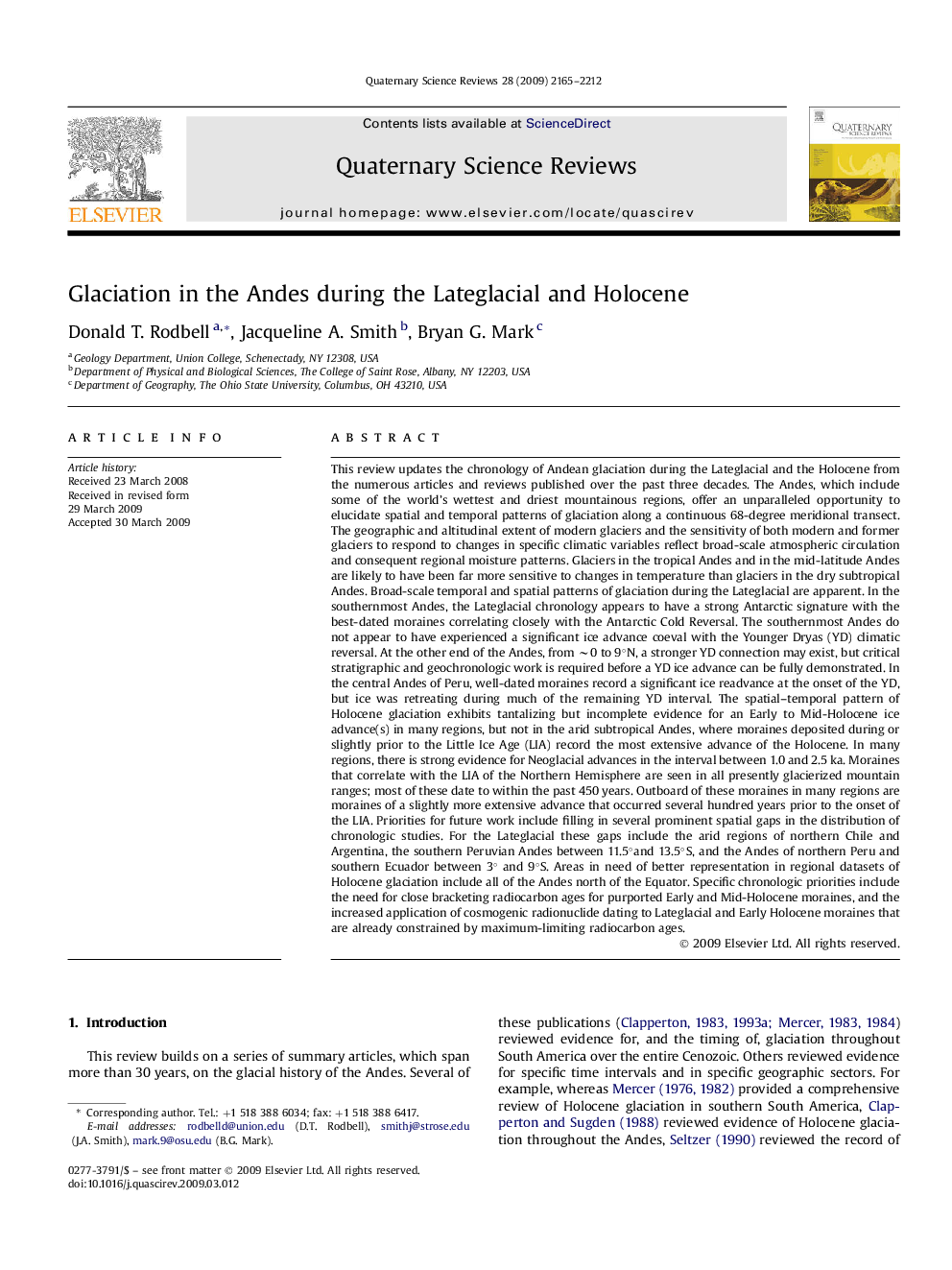| کد مقاله | کد نشریه | سال انتشار | مقاله انگلیسی | نسخه تمام متن |
|---|---|---|---|---|
| 4737953 | 1640935 | 2009 | 48 صفحه PDF | دانلود رایگان |

This review updates the chronology of Andean glaciation during the Lateglacial and the Holocene from the numerous articles and reviews published over the past three decades. The Andes, which include some of the world's wettest and driest mountainous regions, offer an unparalleled opportunity to elucidate spatial and temporal patterns of glaciation along a continuous 68-degree meridional transect. The geographic and altitudinal extent of modern glaciers and the sensitivity of both modern and former glaciers to respond to changes in specific climatic variables reflect broad-scale atmospheric circulation and consequent regional moisture patterns. Glaciers in the tropical Andes and in the mid-latitude Andes are likely to have been far more sensitive to changes in temperature than glaciers in the dry subtropical Andes. Broad-scale temporal and spatial patterns of glaciation during the Lateglacial are apparent. In the southernmost Andes, the Lateglacial chronology appears to have a strong Antarctic signature with the best-dated moraines correlating closely with the Antarctic Cold Reversal. The southernmost Andes do not appear to have experienced a significant ice advance coeval with the Younger Dryas (YD) climatic reversal. At the other end of the Andes, from ∼0 to 9°N, a stronger YD connection may exist, but critical stratigraphic and geochronologic work is required before a YD ice advance can be fully demonstrated. In the central Andes of Peru, well-dated moraines record a significant ice readvance at the onset of the YD, but ice was retreating during much of the remaining YD interval. The spatial–temporal pattern of Holocene glaciation exhibits tantalizing but incomplete evidence for an Early to Mid-Holocene ice advance(s) in many regions, but not in the arid subtropical Andes, where moraines deposited during or slightly prior to the Little Ice Age (LIA) record the most extensive advance of the Holocene. In many regions, there is strong evidence for Neoglacial advances in the interval between 1.0 and 2.5 ka. Moraines that correlate with the LIA of the Northern Hemisphere are seen in all presently glacierized mountain ranges; most of these date to within the past 450 years. Outboard of these moraines in many regions are moraines of a slightly more extensive advance that occurred several hundred years prior to the onset of the LIA. Priorities for future work include filling in several prominent spatial gaps in the distribution of chronologic studies. For the Lateglacial these gaps include the arid regions of northern Chile and Argentina, the southern Peruvian Andes between 11.5°and 13.5°S, and the Andes of northern Peru and southern Ecuador between 3° and 9°S. Areas in need of better representation in regional datasets of Holocene glaciation include all of the Andes north of the Equator. Specific chronologic priorities include the need for close bracketing radiocarbon ages for purported Early and Mid-Holocene moraines, and the increased application of cosmogenic radionuclide dating to Lateglacial and Early Holocene moraines that are already constrained by maximum-limiting radiocarbon ages.
Journal: Quaternary Science Reviews - Volume 28, Issues 21–22, October 2009, Pages 2165–2212